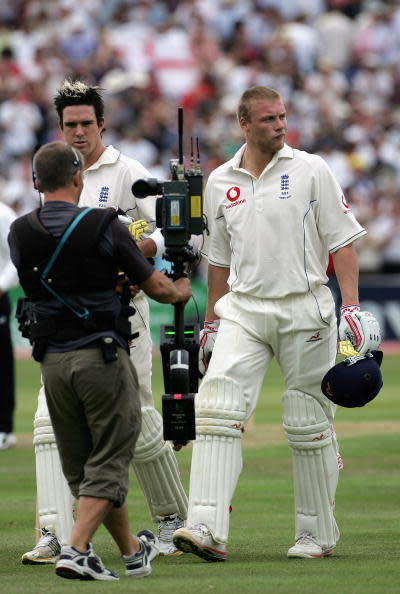The Bazball revolution should be televised

The lack of affordable and accessible coverage for the Bazball revolution is a massive missed opportunity for enfranchising a generation of cricket fans.
There is no doubt that in the last 30 years, Sky Sports in particular has changed the way sport is watched – and funded.
From the Premier League to Test cricket, the darts to Formula 1, it has pumped billions into sports which were once just tit-bit conversation points down the pub.
It’s made British sporting teams global brands that attract even more cash, and it is a huge success story.
This income makes the age-old ‘reach vs revenue’ argument somewhat redundant. Why put something on free-to-air TV, when you have paid-for eyeballs on it?
Sky Sports has taken a lot of this cash, and put lots of cash back into local communities too, spending millions of pounds including with groups like Kick It Out in football, and with programmes like Dynamos Cricket, a £30m initiative to support grassroots cricket.
There can be no doubt that both Sky and more recently BT/TNT, have had a profound – and positive – impact on the way Brits watch sport.
Yet, lots cannot afford multiple subscriptions, and are therefore unable to watch England play cricket.
Especially in current economic times, cash-strapped Brits are increasingly doing audits of what they pay for.
As it stands, TNT Sports, Amazon and Sky Sports share rights for the Premier League, with Sky Cricket and TNT sharing cricket rights.
Most recently, TNT signed on for a five year deal for cricket in India – and it also has rights to the Ashes down under.
As a cricket fan, I want to watch everything England do right now, especially in Test cricket under Bazball.
The revolution is setting new precedents and records with every Test match, and the most recent India Test perhaps the greatest of the lot.
I must admit, I on a number of occasions, almost signed up for TNT, before abandoning it, because of the eye-watering price.
While I don’t have a problem with world class sport being on a subscription service like Sky or TNT; there is a powerful argument for it also being on some kind of terrestrial TV also. By law.
Now there is of course already rules relating to major UK sporting events; the so-called ‘crown jewels’, covering things such as the Olympics, football World Cups, the FA Cup, the Grand National, and Wimbledon.
Test cricket is only ‘category B’, meaning home matches can be on platforms like Sky, provided there are highlights on free-to-air channels.
There are no rules relating to away fixtures – it is up to the broadcasters to strike a deal, and in this occasion, TNT’s agreement to show the India series was a last-gasp decision as it is.
Maybe it’s time this changed. In Australia, there is a simultaneous broadcast on paywalled TV and free to air, and in India, it is compulsory to have it on state-owned television, in addition to privately owned broadcasters.
The lack of either a live broadcast, or even a short highlights package, on the BBC, ITV or Channel 4 (which had rights to England in India last time for example), is a big missed opportunity.
This is not an issue of revenue in the short term, but one of access and growth in the longer term.
Of course Sky or TNT would not want to share their coverage with a terrestrial broadcaster, they’d make less money, and they’d argue, that would mean players get paid less as a consequence, and less money can be put back into the grassroots game, too.
Both of those things are no doubt true.
But, putting it on the TV would mean cricket was in more people’s living rooms to begin with.

It could help to inspire a new generation of cricketers.
And it might help to solve the long-term malaise at the root.
If there’s access, it could mean there is less needs to be put cash back into the struggling grassroots scene to begin with.
I know this, because like millions of people born in the 1990s, I had this exact experience almost 20 years ago.
When England won the 2005 Ashes, coverage was on both Sky Cricket, and Channel 4.
At my school, cricket club was overflowing.
Test match tickets became like gold dust.
I went out and bought a new bat, and joined a team, which I am still in.
In truth I dread to think what might have been, if it wasn’t on Channel 4 all those years ago.
I wouldn’t have been able to watch it, as I didn’t have Sky Sports back then.
I may have never even fallen in love with the game.
What happened in 2005, is happening again now under Ben Stokes.
This is a once-in-a-generation moment, a revolution, a paradigm shift in how the game is played, and everyone with an inkling of interest in sporting entertainment should be able to watch it.
There is a huge opportunity to enfranchise people, and it would simply require either co-operation, or legislation, to put some form of England cricket on a channel everyone can access, even if it’s in addition to being on paid-for services..
Currently the only way to watch this Test if you don’t have TNT, is eight minute Youtube highlights. That surely can’t be right, or the most effective way to gain and maintain an audience.
Put the cricket in people’s living rooms if you want them to get outside and play.

 Yahoo Finance
Yahoo Finance 